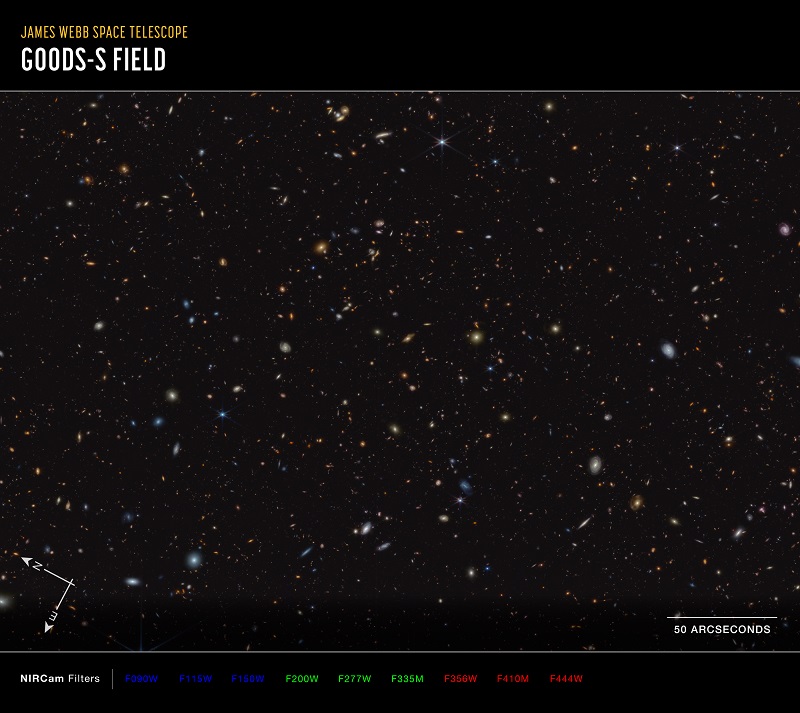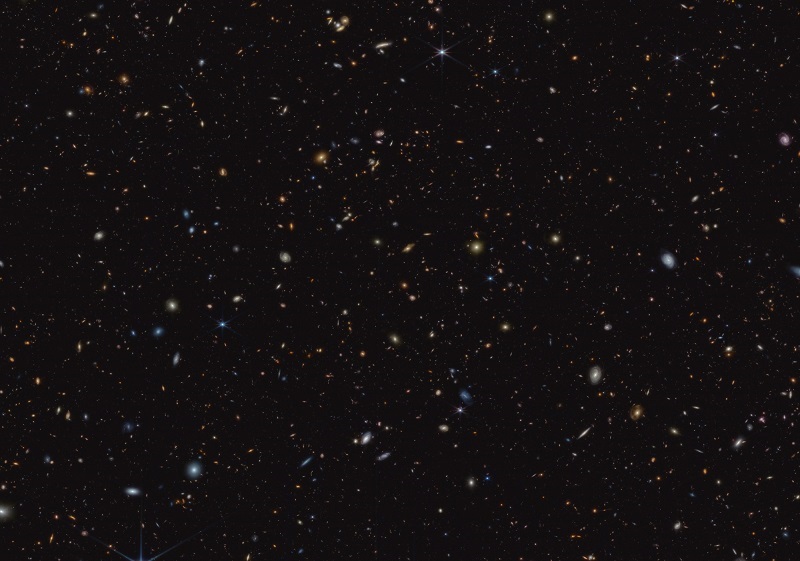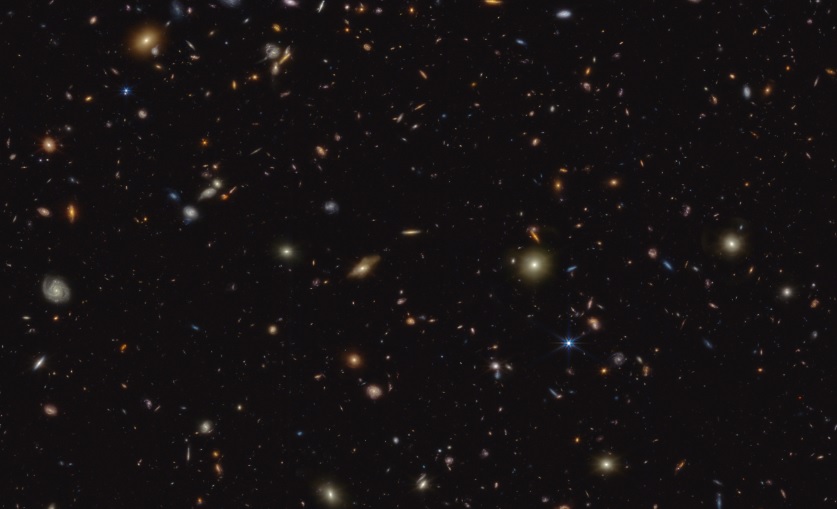NASA’s James Webb Space Telescope -JWST- was taken for the JWST Advanced Deep Extragalactic Survey, or JADES, program. It shows a portion of an area
NASA’s James Webb Space Telescope -JWST- was taken for the JWST Advanced Deep Extragalactic Survey, or JADES, program. It shows a portion of an area of the sky known as GOODS-South, which has been well studied by the Hubble Space Telescope and other observatories. More than 45,000 galaxies are visible here, reported NASA.

Using these and other data, the JADES team has discovered hundreds of galaxies that existed when the universe was less than 600 million years old. The sheer number of these galaxies was far beyond predictions from observations made before Webb’s launch.

The team also has identified galaxies that existed during a time known as the Epoch of Reionization, when the universe underwent a transformation from opaque to transparent. Many of these galaxies shown unusually strong emission line signatures due to the creation of multitudes of hot, massive stars, reported NASA.

In the image, blue, green, and red were assigned to Webb’s NIRCam -Near-Infrared Camera- data at 0.9, 1.15, and 1.5 microns; 2.0, 2.77, and 3.55 microns; and 3.56, 4.1, and 4.44 microns (F090W, F115W, and F150W; F200W, F277W, and F335M; and F356W, F410M, and F444W), respectively, as reported by NASA.
All Credit: NASA, ESA, CSA, Brant Robertson (UC Santa Cruz), Ben Johnson (CfA), Sandro Tacchella (Cambridge), Marcia Rieke (University of Arizona), Daniel Eisenstein (CfA)


